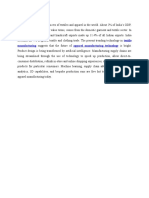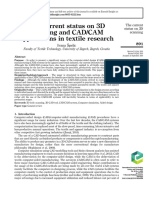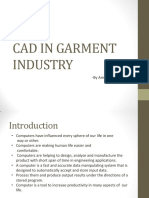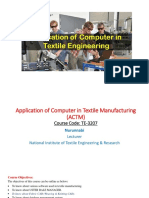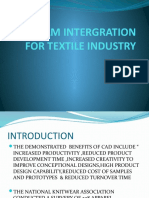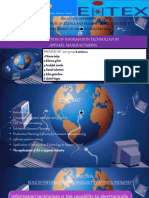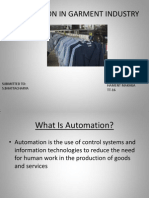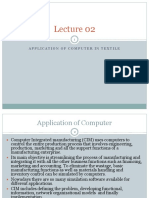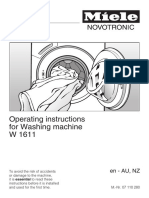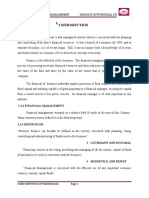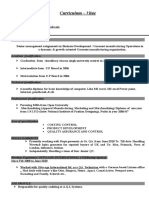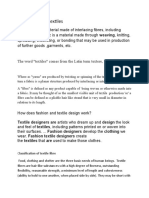0% found this document useful (0 votes)
84 views8 pagesIntroduction To Textile Software
The document discusses the integration of computer-based technology in the textile and apparel industry, highlighting key applications such as CAD, CAM, CIM, and CAT. It emphasizes the benefits of digital solutions, including improved design processes, manufacturing efficiency, and quality control, as well as the emergence of E-textiles for wearable technology. Additionally, it lists popular software used in various textile sectors and outlines the advantages of computerization across different stages of textile production.
Uploaded by
ikumarpramanikCopyright
© © All Rights Reserved
We take content rights seriously. If you suspect this is your content, claim it here.
Available Formats
Download as PDF, TXT or read online on Scribd
0% found this document useful (0 votes)
84 views8 pagesIntroduction To Textile Software
The document discusses the integration of computer-based technology in the textile and apparel industry, highlighting key applications such as CAD, CAM, CIM, and CAT. It emphasizes the benefits of digital solutions, including improved design processes, manufacturing efficiency, and quality control, as well as the emergence of E-textiles for wearable technology. Additionally, it lists popular software used in various textile sectors and outlines the advantages of computerization across different stages of textile production.
Uploaded by
ikumarpramanikCopyright
© © All Rights Reserved
We take content rights seriously. If you suspect this is your content, claim it here.
Available Formats
Download as PDF, TXT or read online on Scribd
/ 8



